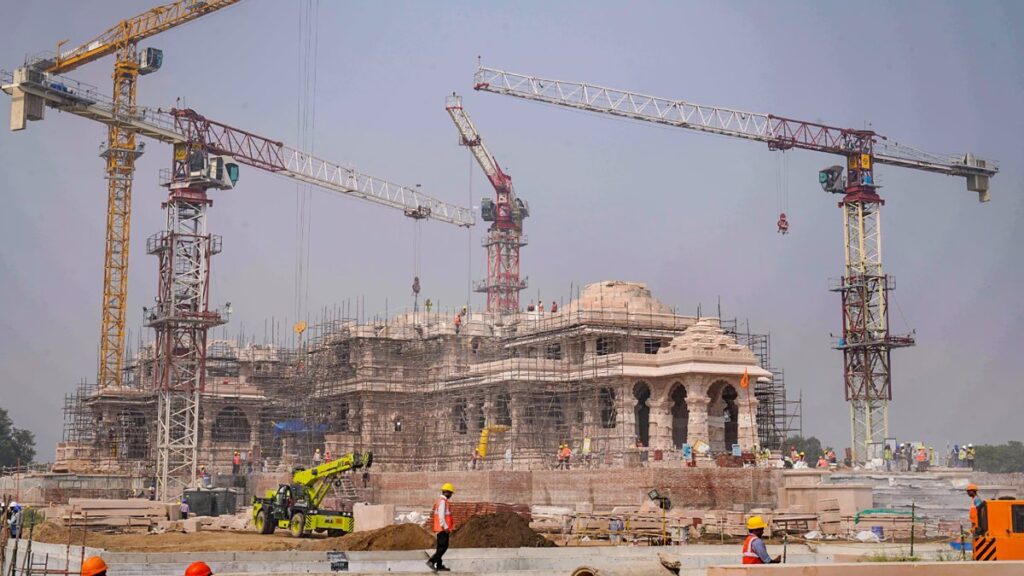Ayodhya, a city steeped in history and spirituality, beckons pilgrims and history enthusiasts alike. As the birthplace of Lord Rama, it holds a special place in the hearts of millions. While the spiritual significance is undeniable, the practical aspects of reaching Ayodhya may challenge some. Fear not, as this guide is here to navigate you through the journey and ensure a seamless visit to this sacred destination.
Understanding Ayodhya’s Importance:
Before embarking on your journey, it’s essential to appreciate Ayodhya’s spiritual and cultural significance. The city is a pilgrimage site for Hindus and a historical treasure trove. Its ancient temples, ghats, and the revered Sarayu River create an atmosphere of tranquillity and devotion.
Choosing the Right Mode of Transportation:
Ayodhya is well-connected by road, rail, and air, providing travellers various options. The road network is a good choice if you prefer a scenic drive. Alternatively, trains and flights offer faster options. Faizabad Junction is the nearest railway station, while Ayodhya has a small airport with limited connectivity.
By Road:
For those opting for a road trip, Ayodhya is accessible via major highways. The National Highway 27 and 330 pass through the city, making it well-connected to neighbouring cities and states. The journey by road allows you to witness the changing landscapes and immerse yourself in the region’s cultural diversity.
- From Rajasthan:
Start from Jaipur or any major city in Rajasthan.
Take National Highway 52 (NH52) towards Agra.
Continue on NH19 towards Faizabad (Ayodhya).
- From Delhi:
Begin your journey from Delhi.
Take National Highway 44 (NH44) towards Agra.
Connect to National Highway 19 (NH19) from Agra, which leads to Faizabad (Ayodhya).
- From Madhya Pradesh:
Commence your journey from cities like Bhopal or Indore.
Take National Highway 44 (NH44) towards Jhansi.
From Jhansi, take National Highway 27 (NH27) towards Lucknow.
Finally, take National Highway 330 (NH330) to reach Ayodhya.
- From Uttar Pradesh:
If you’re starting within Uttar Pradesh, connect to National Highway 28 (NH28) or National Highway 30 (NH30), depending on your location.
Head towards Faizabad (Ayodhya).
- From Bihar:
Begin your journey from cities like Patna.
Take National Highway 30 (NH30) towards Varanasi.
Connect to National Highway 31 (NH31) from Varanasi to Faizabad (Ayodhya).
- From Jharkhand:
Start from cities like Ranchi or Jamshedpur.
Take National Highway 19 (NH19) towards Varanasi.
Connect to National Highway 31 (NH31) towards Faizabad (Ayodhya) from Varanasi.
- From Nepal:
Begin your journey from Kathmandu or other cities in Nepal.
Connect to the East-West Highway (NH9) and head towards the border with India.
Once in India, navigate towards Ayodhya via appropriate National Highways based on your entry point.
By Rail:
Train travel is widespread, and the Faizabad Junction is Ayodhya’s primary railway station. From major cities like Delhi, Lucknow, and Varanasi, there are regular trains to Faizabad. Once you reach the station, local transportation is readily available to take you to Ayodhya.
By Air:
While Ayodhya has a small airport, the options for direct flights may be limited. If you prefer air travel, consider flying into nearby airports like Lucknow or Varanasi and then taking a train or road to Ayodhya. This ensures a smoother journey with more flight choices. Ayodhya’s airport has also become operational so that you can easily come to Ayodhya by air.
Local Transportation in Ayodhya:
Upon reaching Ayodhya, the city offers various modes of local transportation. Auto-rickshaws, cycle rickshaws, and taxis can take you to critical pilgrimage sites and historical landmarks. The city’s compact size makes it convenient to explore on foot as well.
Accommodation Options:
Ayodhya offers a variety of lodging choices to suit a range of price points. You can discover a nice place to stay that meets your requirements, from guesthouses to hotels. It’s best to reserve your lodging in advance, particularly during the busiest times of the year for pilgrimages.
Respecting Local Customs and Traditions:
As you explore Ayodhya, respecting the local customs and traditions is crucial. Many sites hold deep religious significance, and modest clothing is recommended when visiting temples and sacred places. Understanding and adhering to local customs provide a more enriching and respectful travel experience.
In conclusion, reaching Ayodhya is not just a physical journey but a spiritual and cultural one. Whether you travel by road, rail, or air, the destination’s allure will captivate your heart and soul. Plan your trip thoughtfully, immerse yourself in the spiritual ambience, and make memories in this sacred city that will last a lifetime.

